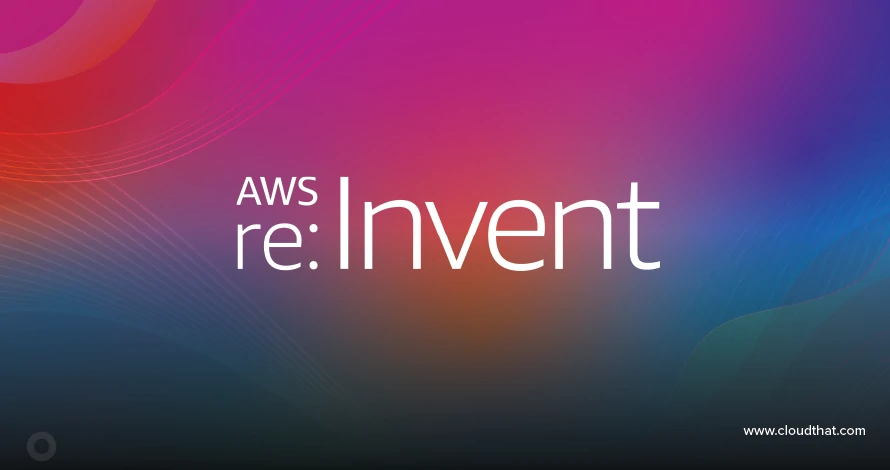|
Voiced by Amazon Polly |
Overview
As machine learning continues to evolve, numerous algorithms have been developed to enhance the accuracy and performance of predictive models. One such algorithm that has gained popularity recently is XGBoost, which stands for eXtreme Gradient Boosting. If you are a data scientist or a machine learning enthusiast, you have probably heard of XGBoost, one of the most popular and widely used machine learning frameworks. In this blog, we will delve into the details of XGBoost, understand how it works, and explore the key features that make it a popular choice among data scientists and machine learning practitioners.
Pioneers in Cloud Consulting & Migration Services
- Reduced infrastructural costs
- Accelerated application deployment
Introduction to XGBoost

XGBoost is an ensemble learning technique based on decision trees that integrates the predictions of various base models to provide a final prediction. It is an optimized implementation of the gradient boosting algorithm, a powerful ensemble learning technique used for classification and regression tasks.
Key Features of XGBoost
- Regularized Learning: XGBoost provides built-in support for regularization techniques such as L1 (Lasso) and L2 (Ridge) regularization, which help prevent overfitting, a common problem in machine learning. Regularization techniques add a penalty term to the loss function during model training, discouraging the model from assigning too much importance to any feature.
- Tree Pruning: XGBoost uses tree pruning to control the complexity of decision trees. Pruning involves removing the unnecessary branches of a tree that do not contribute significantly to improving the model’s accuracy.
- Handling Missing Values: XGBoost has built-in capabilities to handle missing values in the input data. It can automatically learn how to handle missing values during training best, reducing the need for explicit imputation or deletion of rows with missing values.
- Feature Importance: XGBoost provides a way to calculate feature importance, which helps identify the most important features in the dataset for accurate predictions. Feature importance can be used for feature selection, model interpretability, and identifying potential data quality issues.
How does XGBoost work?
The main idea behind XGBoost is to iteratively build a series of decision trees and combine them to make accurate predictions. This process continues until a predefined number of trees is built, or a certain stopping criterion is met.
Here’s a high-level overview of how XGBoost works:

Source: 1628629579418 (1009×720) (licdn.com)
- Initialize the model: XGBoost starts by initializing a base model, usually a decision tree, as the first tree in the ensemble. This tree is often called the “root” or the “base learner”.
- Predict and calculate residuals: The initial tree predicts the training data. The difference between the predicted and actual values (i.e., residuals) is calculated for each training instance. These residuals represent the errors made by the initial tree.
- Build subsequent trees to correct residuals: XGBoost then builds additional trees (also known as “boosting rounds” or “iterations”) to correct the residuals made by the previous trees.
- Weighted updates: During training each subsequent tree, XGBoost assigns different weights to the training instances based on the residuals.
- Combine trees to make final predictions: Once all the trees are built, XGBoost combines their predictions to make the final predictions. The trees’ predictions are weighted based on their performance and combined using a weighted sum or other techniques, depending on the task (e.g., regression or classification).
- Regularization: Regularization methods are also included in XGBoost to reduce overfitting and enhance the model’s generalization capabilities. This incorporates L1 (Lasso) and L2 (Ridge) regularization on the tree’s leaf weights, which aids in limiting the model’s complexity.
- Hyperparameter tuning: A offers many hyperparameters are offered by XGBoost and can be adjusted to enhance the model’s performance. The learning rate, tree depth, number of trees, subsampling rate, and a host of additional hyperparameters are among them.
Use Case of XGBoost
XGBoost has many real use cases for machine learning, such as:
- Classification: XGBoost can classify images, text, audio, etc., into categories based on various features and labels. For example, XGBoost was used by Netflix to classify movies into different genres based on their metadata and user ratings.
- Regression: XGBoost can predict numerical values based on various features and historical data. For example, XGBoost was used by Uber to predict travel time and surge pricing based on traffic conditions and demand patterns.
- Clustering: XGBoost can group similar data points based on various features and distances. For example, XGBoost was used by Alibaba to cluster their customers into different segments based on their browsing and purchasing behavior.
- Time-series forecasting: XGBoost can be used for time-series forecasting, where the goal is to predict future values of a time-dependent variable. It is widely used in applications such as stock price prediction, weather forecasting, and energy demand prediction.
Code for XGBoost in Python
Here’s an example of how you can use XGBoost in Python, along with some commonly used hyperparameters:
|
1 2 3 4 5 6 7 8 9 10 11 12 13 14 15 16 17 18 19 20 21 22 23 24 25 26 27 28 |
import xgboost as xgb from sklearn.model_selection import train_test_split from sklearn.metrics import accuracy_score # Load and prepare data # Assume you have X_train, X_test, y_train, y_test as your training and testing data # Split the data into training and testing sets X_train, X_test, y_train, y_test = train_test_split(X, y, test_size=0.2, random_state=42) # Initialize XGBoost model model = xgb.XGBClassifier(learning_rate=0.1, max_depth=3, n_estimators=100, subsample=0.8, colsample_bytree=0.8, gamma=0.1, random_state=42) # Train the model model.fit(X_train, y_train) # Predict on testing data y_pred = model.predict(X_test) # Evaluate the model accuracy = accuracy_score(y_test, y_pred) print("Accuracy:", accuracy) |
Conclusion
Empowering organizations to become ‘data driven’ enterprises with our Cloud experts.
- Reduced infrastructure costs
- Timely data-driven decisions
About CloudThat
CloudThat is an award-winning company and the first in India to offer cloud training and consulting services worldwide. As a Microsoft Solutions Partner, AWS Advanced Tier Training Partner, and Google Cloud Platform Partner, CloudThat has empowered over 850,000 professionals through 600+ cloud certifications winning global recognition for its training excellence including 20 MCT Trainers in Microsoft’s Global Top 100 and an impressive 12 awards in the last 8 years. CloudThat specializes in Cloud Migration, Data Platforms, DevOps, IoT, and cutting-edge technologies like Gen AI & AI/ML. It has delivered over 500 consulting projects for 250+ organizations in 30+ countries as it continues to empower professionals and enterprises to thrive in the digital-first world.
FAQs
1. What is XGBoost?
ANS: – XGBoost (eXtreme Gradient Boosting) is an optimized and scalable gradient boosting framework used for machine learning tasks, particularly for regression and classification problems.
2. How can I prevent overfitting in XGBoost?
ANS: – There are several ways to prevent overfitting in XGBoost:
- Regularization: You can use the L1 and L2 regularization techniques provided by XGBoost by setting the reg_alpha and reg_lambda hyperparameters, respectively.
- Early stopping: XGBoost allows you to specify a validation set during training, and you can use the early stopping technique to stop training when the performance on the validation set starts to degrade.
- Limiting tree depth: You can limit the maximum depth of the decision trees by setting the max_depth hyperparameter. Smaller tree depths can help prevent overfitting by reducing the model’s complexity.
- Lower learning rate: A smaller learning rate (i.e., smaller step size) can help the model to converge slowly and reduce the chances of overfitting.
3. Can XGBoost handle categorical features?
ANS: – Yes, XGBoost can handle categorical features directly. You can encode categorical features using one-hot or label encoding techniques and pass them as input.

WRITTEN BY Hitesh Verma
Hitesh works as a Senior Research Associate – Data & AI/ML at CloudThat, focusing on developing scalable machine learning solutions and AI-driven analytics. He works on end-to-end ML systems, from data engineering to model deployment, using cloud-native tools. Hitesh is passionate about applying advanced AI research to solve real-world business problems.


 Login
Login


 June 14, 2023
June 14, 2023 PREV
PREV










Comments